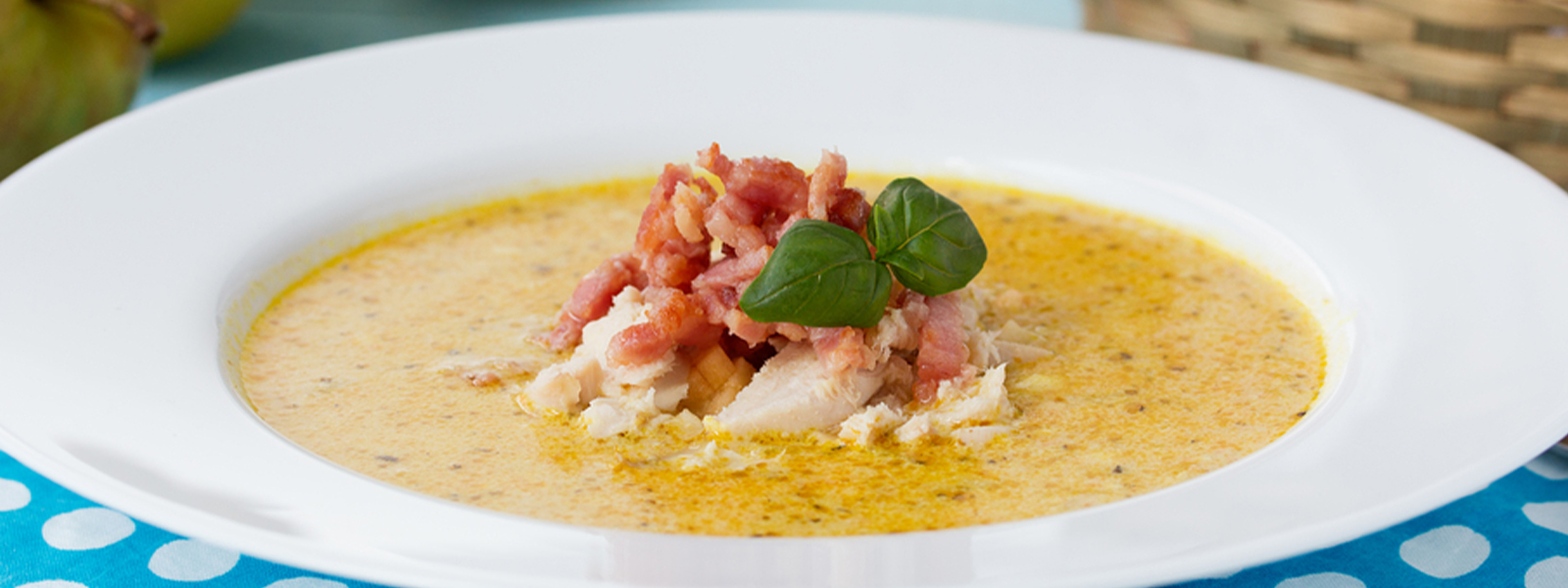

When you think of comfort food, soups often top the list, warm, nourishing, and satisfying. Among these, the mulligatawny soup recipe stands out as a unique blend of Indian spices and British influence. A colonial legacy that was born in India but travelled across the world, this soup is a perfect example of Anglo-Indian cuisine, rich, flavourful, and heart-warming.
In this detailed guide, we’ll explore how to prepare mulligatawny soup at home, its history, key ingredients, step-by-step method, variations, and tips to get it just right. Whether it’s monsoon in Mumbai or winter in London, this soup can be enjoyed any time of the year.
The name "Mulligatawny" comes from the Tamil words milagu (pepper) and thanni (water), which translates to “pepper water.” Originally a spicy South Indian rasam-like broth, it was adapted during the British Raj to include meat, rice, and vegetables, turning it into a hearty soup.
This fusion dish retains the essence of Indian spices while adopting a Western-style soup texture. It can be vegetarian or made with chicken or lamb, and often includes lentils or rice to make it more filling.
Nutritious and Balanced: It has proteins, carbs, and fibre all in one bowl.
Great for All Seasons: Warm and spicy in winters; light and tangy in summers.
Easily Customisable: You can make it vegetarian, vegan, or non-vegetarian.
Gluten-Free and Wholesome: Perfect for those on special diets.
Globally Loved: Found in British menus, Indian homes, and restaurants worldwide.
At Tedco Global Chefs Academy (TGCA), students learn classic recipes like this not just to master technique but also to appreciate the cultural history behind each dish.
Here’s a basic set of ingredients to get started:
For the Base:
Oil or ghee – 2 tbsp
Onion – 1 large, chopped
Garlic – 4 cloves
Ginger – 1 inch
Carrot – 1 medium
Apple – 1 green
Tomato – 1 large
Moong dal – ½ cup
Basmati rice – 2 tbsp (optional)
Spices: Cumin seeds, coriander powder, turmeric, black pepper, garam masala, curry powder, salt.
Liquids: Vegetable or chicken broth – 4 cups, Coconut milk – ½ cup
Garnish: Coriander leaves, lemon, cream, croutons
Step 1: Prepare the Base
Step 2: Add Vegetables & Fruits
Step 3: Spice it Up
Step 4: Add Dal and Stock
Step 5: Blend and Finish
Step 6: Serve Hot
1. Chicken Mulligatawny Soup
2. Lamb Mulligatawny Soup
3. Vegan Mulligatawny
Skip ghee, use oil.
Replace stock with vegetable broth and add coconut milk for richness.
4. Spicy Mulligatawny
Add green chillies or increase black pepper for an extra kick.
5. Creamy Restaurant-Style Version
Add a dollop of butter and cream while serving.
This style is often taught in advanced culinary sessions at TGCA, where students learn fine-dining presentations for classic dishes.
Fridge: 3 days max. Freezer: 2 months. Portion in advance for meal prep.
Calories: 180–250, Protein: 7–10g, Fat: 8–12g, Fibre: 4–5g
With toast, garlic naan, or steamed rice. Perfect for light dinners.
At Tedco, students don’t just cook, they learn the stories behind dishes like Mulligatawny Soup. The culinary modules teach regional history, spice balancing, and recipe experimentation.
Mulligatawny Soup is more than just a dish—it’s a legacy. With bold flavours and easy ingredients, it's a warm hug in a bowl. If you dream of becoming a chef, TGCA offers hands-on culinary programs that turn such traditional recipes into career opportunities.
1. What is Mulligatawny Soup made of?
Mulligatawny soup typically includes lentils, vegetables, rice, mild spices, and sometimes chicken or lamb. Its base combines Indian spices with British soup techniques, giving it a thick, nourishing texture that's perfect for every season.
2. Is Mulligatawny Soup vegetarian or non-vegetarian?
It can be either. Vegetarian versions use lentils and vegetables, while non-veg versions add chicken or mutton. TEDCO students are taught both variants to understand how to adapt classic Anglo-Indian recipes for all preferences.
3. What does “Mulligatawny” mean?
The word comes from the Tamil words "milagu" (pepper) and "tanni" (water), meaning “pepper water.” Though it started as a spicy broth, it evolved into a rich soup during colonial times.
4. Can I make this soup creamy?
Yes, adding coconut milk or cream can give Mulligatawny soup a silky texture. This fusion of Indian spice and Western creaminess is what makes it an enduring comfort food across cultures.
5. How spicy is Mulligatawny Soup?
It’s mildly spiced. The heat can be adjusted based on your taste. TGCA culinary experts suggest balancing black pepper, turmeric, and cumin with creamy elements to create a mellow, flavorful bowl.
6. Is this soup gluten-free?
Yes, when made without flour or roux, Mulligatawny is naturally gluten-free. Using lentils or rice as a thickener makes it suitable for gluten-sensitive individuals without compromising the taste.
7. Can I prepare it in advance and reheat?
Definitely! Like most soups, it tastes even better the next day. Flavours blend beautifully over time. That’s why TEDCO encourages batch cooking and soup storage techniques in their culinary training.
8. What protein options can I use?
Common options include chicken, lamb, or chickpeas. The soup is flexible—you can even add tofu or paneer for a vegetarian protein boost without changing the essence of the dish.
9. What’s the best way to serve Mulligatawny Soup?
Serve it hot with a drizzle of cream or a wedge of lemon. Pair it with garlic naan or toasted bread for a wholesome, satisfying meal, especially during cold evenings.
10. Is this a good recipe for beginners?
Yes, it’s simple and forgiving. With basic prep and common spices, anyone can make it at home. TGCA recommends it as an ideal starter recipe for those new to global Indian cuisine.
Recipe Features
Recipe Categories
Click one of our representatives below to chat on WhatsApp or send us an email to
info@tedcoeducation.com
Counselor
Bakery and Pastry Courses
Counselor
Culinary Arts Courses
Click one of our representatives below to chat on WhatsApp or send us an email to
info@tedcoeducation.com
Counselor
Bakery and Pastry Courses
Counselor
Culinary Arts Courses